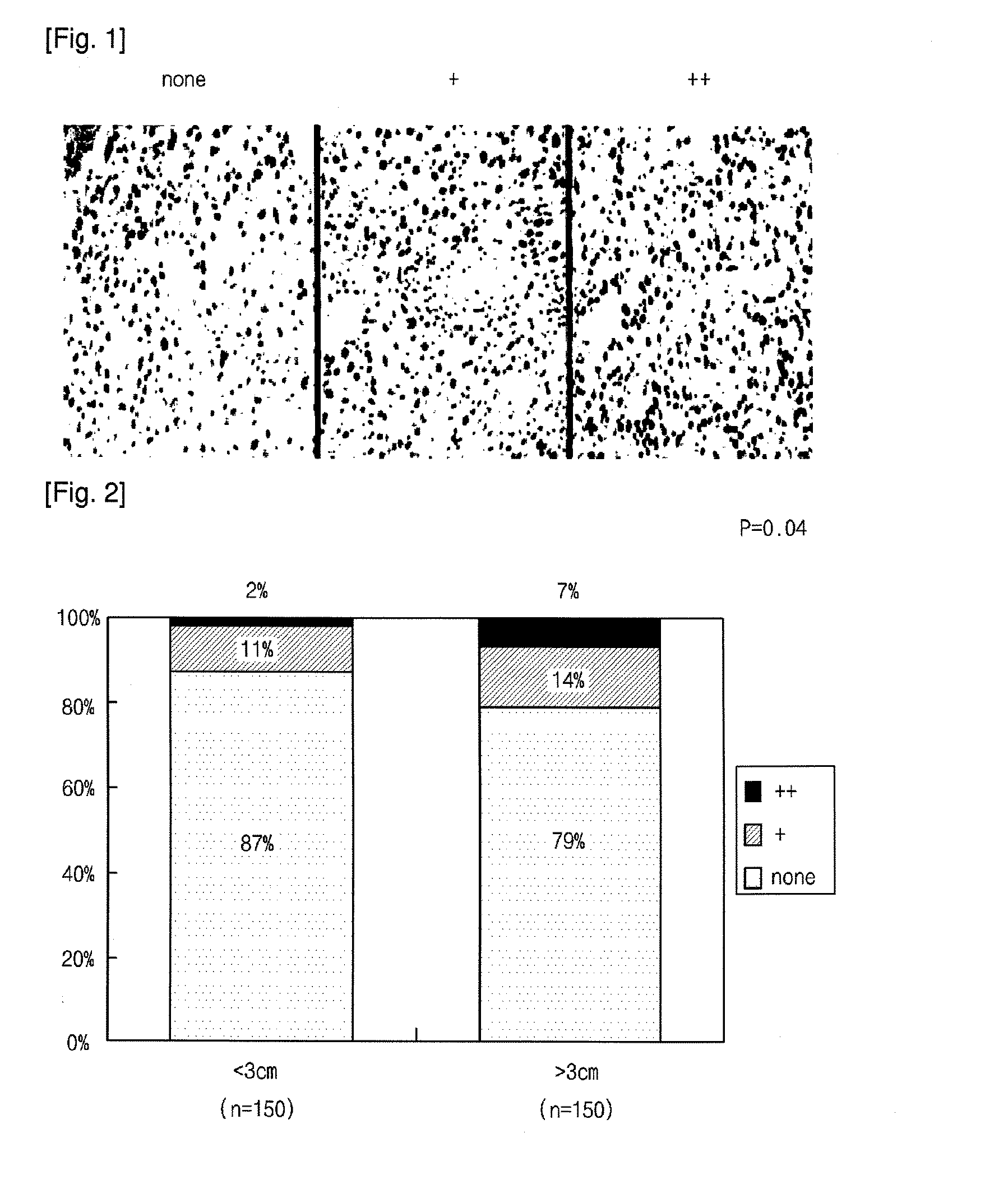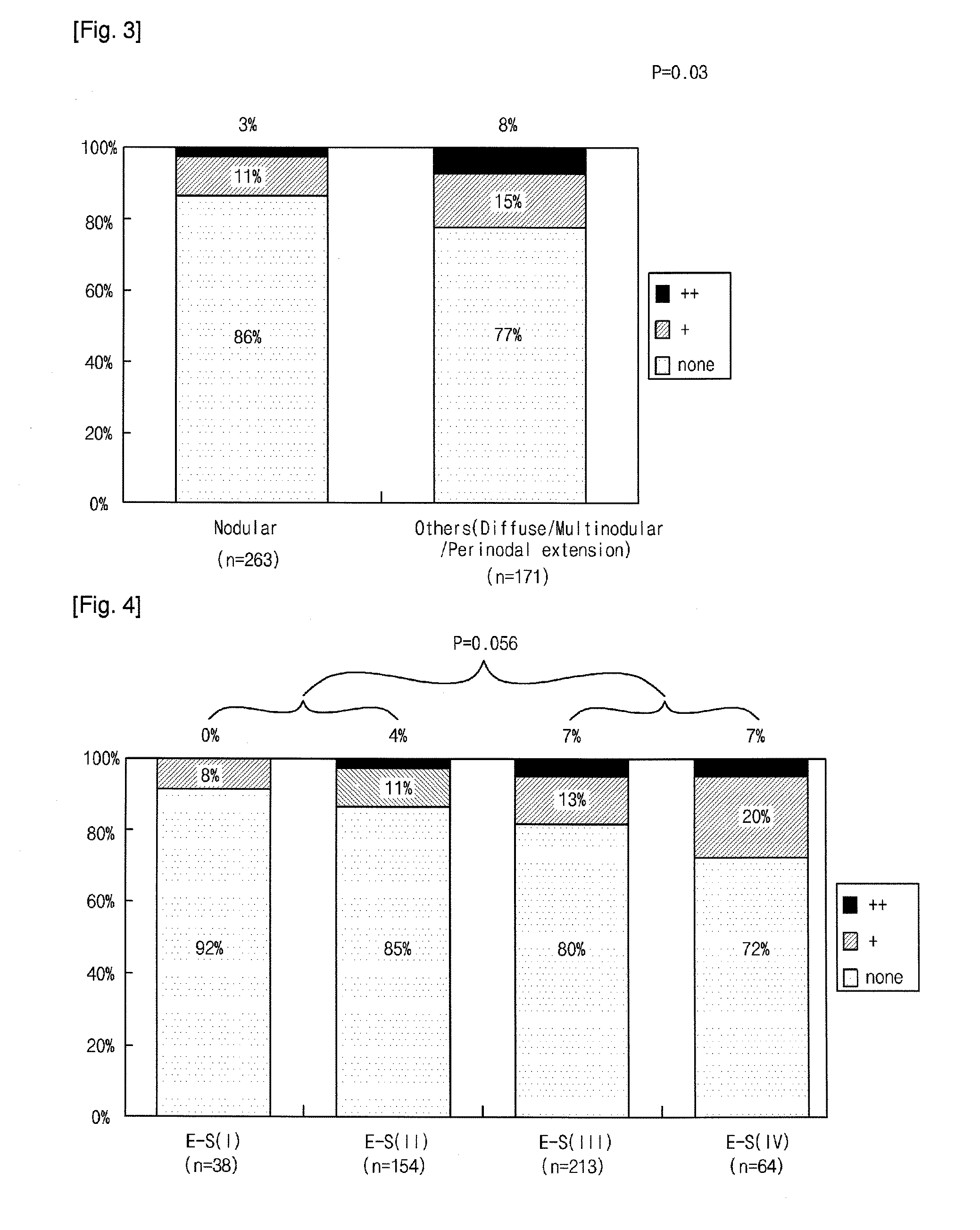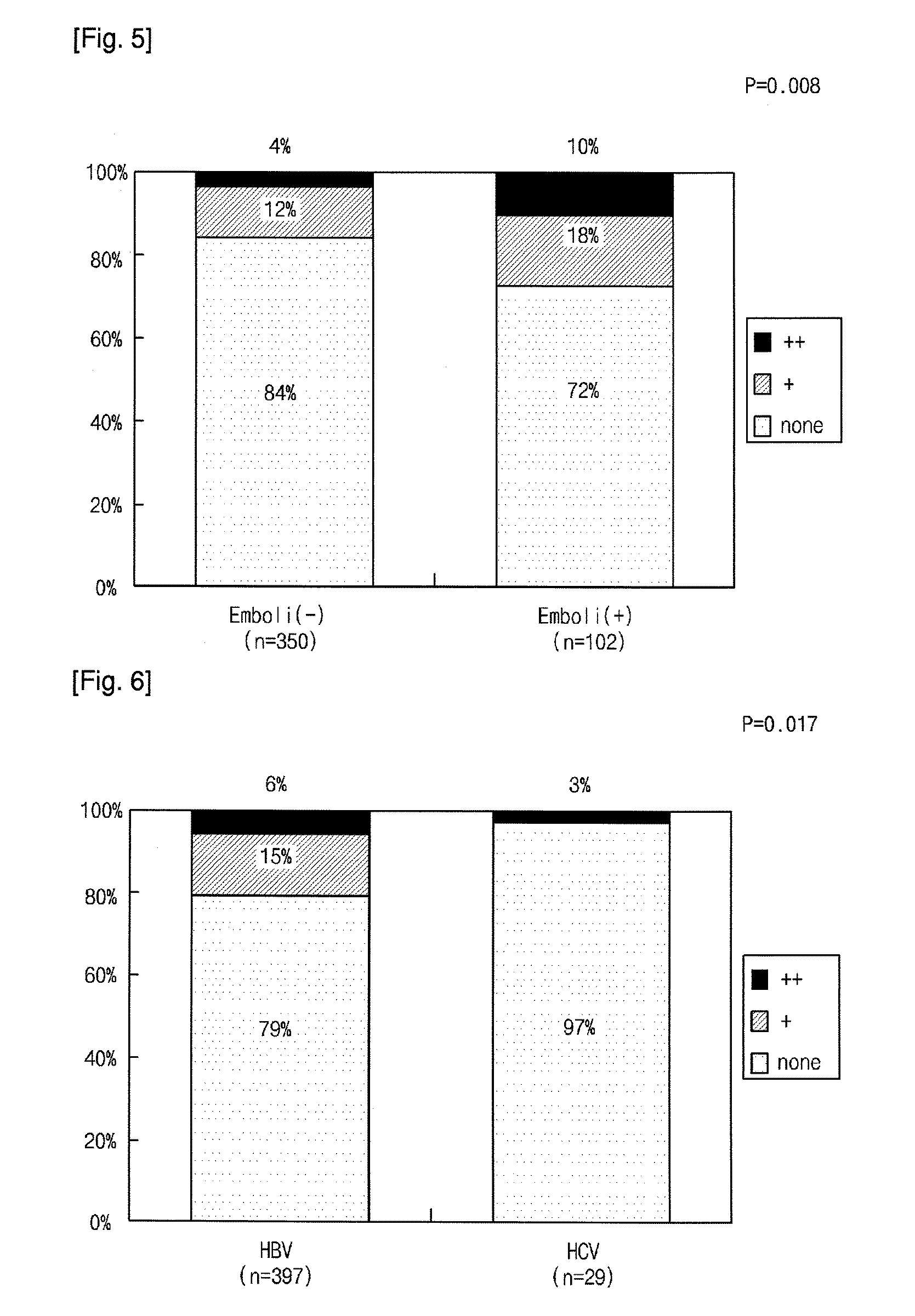Method for diagnosis of post-operative recurrence in patients with hepatocellular carcinoma
- Summary
- Abstract
- Description
- Claims
- Application Information
AI Technical Summary
Benefits of technology
Problems solved by technology
Method used
Image
Examples
example 1
Characteristics of Patients
[0028]A total of 506 HCC patients who were treated with hepatic resection during the time period of 1998 to 2003 at the Asan Medical Center were tested. The clinical characteristics of the 506 patients are listed on Table 1. The patients were followed-up for a median period of 43 months (in the range of 1-96 months) after hepatectomy.
TABLE 1CharacteristicValueAge (years, mean ± SD)56 ± 0Sex (M:F)412:94Disease severity (CH:LC)138:368Child-Pugh class (A / B / C)383 / 73 / 50Causes of HCC [hepatitis B virus (HBV) / hepatitis C virus397 / 29 / 8 / 72(HCV) / Both / non-viral hepatitis cause of HCC (NBNC)]Size of HCC (cm) 4 (0.7-21)Follow-up after hepatectomy (months)43 (1-96)
[0029]The recurrence and survival were determined using medical records at the last follow-up data. In cases in which a patient was lost to follow-up for more than 3 moths, the recurrence and survival were evaluated based on information obtained by visiting places near the patient's residence.
example 2
Immunohistochemical Staining of MTA1
1. Tissue Microarray Construction
[0030]Tissue microarrays were constructed using a previously known method (refer to Oncol Rep. 16: 929-935, 2006). Formalin-fixed, paraffin-embedded tissue samples were arrayed using a tissue-arraying instrument (refer to Beecher Instruments, Slyer Spring, Md.).
[0031]Briefly, representative areas of each tumor were selected and marked on the hematoxylin-eosin (H&E)-stained slide, and its corresponding tissue block was sampled. The target region of each donor block was punched with a tissue cylinder of 1 mm diameter, and the sample was transferred to a recipient block. Each sample was arrayed in duplicate to minimize tissue loss.
2. Immunohistochemical Staining of MTA1 in Human HCC Tissue Microarray
[0032]Immunohistochemical staining for MTA1 was performed using the avidin-biotin-peroxidase complex method with an LSAB kit (DAKO, Carpinteria, Calif.) and 3,3′-diaminobenzidine as a chromogen. Paraffin-embedded tissue-mi...
PUM
 Login to View More
Login to View More Abstract
Description
Claims
Application Information
 Login to View More
Login to View More - R&D
- Intellectual Property
- Life Sciences
- Materials
- Tech Scout
- Unparalleled Data Quality
- Higher Quality Content
- 60% Fewer Hallucinations
Browse by: Latest US Patents, China's latest patents, Technical Efficacy Thesaurus, Application Domain, Technology Topic, Popular Technical Reports.
© 2025 PatSnap. All rights reserved.Legal|Privacy policy|Modern Slavery Act Transparency Statement|Sitemap|About US| Contact US: help@patsnap.com



